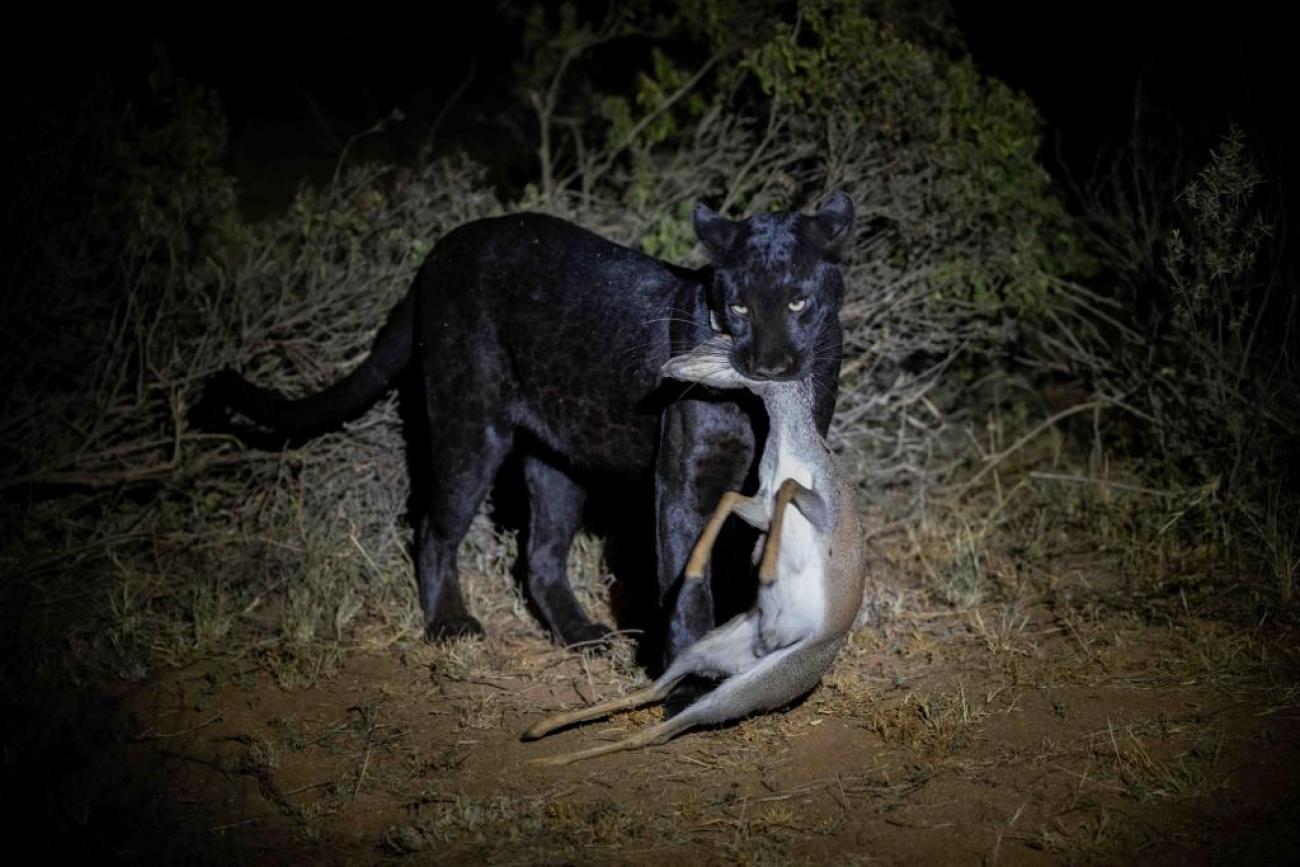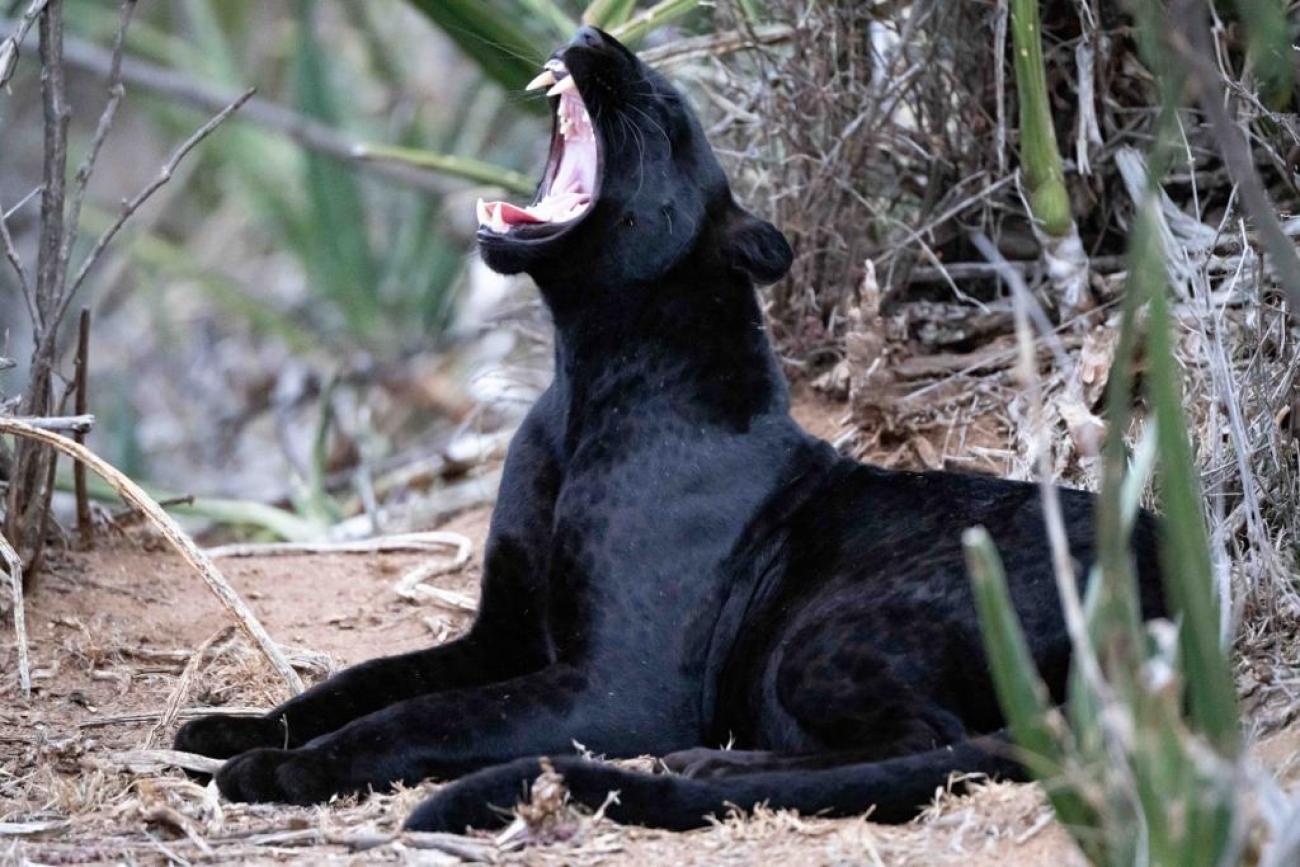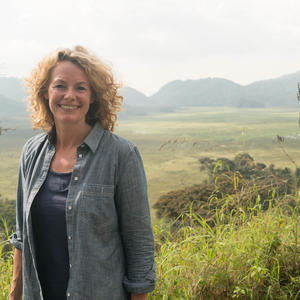An Encounter with a Black Leopard
Photos courtesy of Paul Joynson Hicks
I had not planned to go to Kenya, although as a self-confessed Africaphile I never need much encouragement to go. But this hastily arranged trip came as a result of a tip-off – one that was too irresistible to ignore.
My friend, Paul Joynson Hicks, is a wildlife photographer based in Tanzania. For the last thirty years, he has been guiding people on photographic safaris in many of the continent’s wildlife hotspots. He sent me a message: an animal he had never seen had been spotted in Kenya’s Laikipia Wilderness. I had never seen this animal either. In fact, I wasn’t entirely sure if it wasn’t just a myth dreamt up by the wild imaginings of writers like Rudyard Kipling. We had no choice. We had to go.
Bagheera, of Jungle Book fame, was a Black Panther – which doesn’t really exist. It is a catch-all term for a big cat – usually a leopard or jaguar – that is born black thanks to a genetic quirk. In India these melanistic leopards, although rare, are occasionally seen and photographed, but in Africa, the evidence of their existence is almost entirely anecdotal.

The Laikipia Wilderness camp sits discreetly on a rocky outcrop amidst stumpy acacias on privately owned land. It is a place to come for regional specialities like the endangered Grevy’s zebra, reticulated giraffe and wild dog. The camp caters for a small number of people - wildlife viewing is an almost private affair and there are no other camps or vehicles in the area. So when we found the black leopard - which thanks to the expert field craft of the guides. we did - there was no unruly crush of vehicles jostling to get the best view. Instead, we watched in awed silence as she emerged out of the dark on the opposite side of the river, paused to drink, then continued over the rocks, straight towards us, golden eyes blazing. I couldn’t have been more stunned if she had been a unicorn.
The guides named her Giza, Swahili for ‘darkness’; in the spotlight, her blackness was infinite, as if she had absorbed all surrounding light. But as she came closer- and she came really close - we could see her coat was watermarked with a shimmering pattern of rosettes. She was breathtaking. It was an encounter I will never forget.

